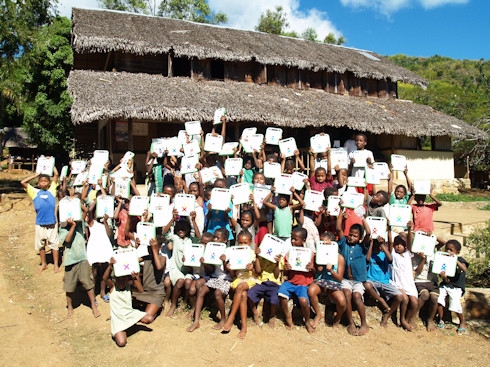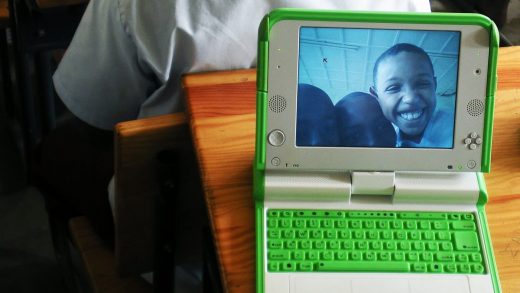In Madagascar, Kids Use Tech To Bond With Others—Not Play Minecraft Alone
Every child, no matter what country they’re from or their social background, should have the chance to use and learn about technology. That’s the thinking behind a number of projects led by international organizations like UNESCO and UNICEF. They hope to bolster education and economic growth by making digital technologies available in the developing world.
The One Laptop Per Child project was a pioneer in this field. This educational project, launched by the MIT in 2005, produces laptop computers suitable for children aged between six and 12. These are loaded with an operating system that features free educational software called Sugar. The program has been rolled out at schools in more than 30 countries.
The project aims to equip all primary-school children and all teachers with computers in a way that involves communities and that ensures everyone feels a sense of responsibility for the equipment. For example, kids aged six to 12 own their computers and can take them home to use.
Research shows that using technology in school makes children more engaged with learning. We wanted to know how children in low-income countries use laptops in their everyday lives; in school and after class. To find out, we embarked on a study in a village in Madagascar four years after the project was launched there.
Our results show that the use of computers in low-income countries supports formal and informal learning activities at home. It provides easy access to information, educational games, and tools for self-expression.
Use At School
Madagascar, an island nation off Africa’s southeast coast, is extremely poor: 75% of the population (25 million) live below the poverty line, and the country scores low on the human development index, performing poorly in areas like education and living standards.
The study was conducted in a village located on the island of Nosy Komba, in the northeast of the country. Laptops are seen among residents there as high-status objects because they cost a lot of money. None of the parents we interviewed could afford to buy one. They also have a high symbolic value: Parents believe that if their children can master laptop use they will become more intelligent and develop professional skills.

A program was rolled out in the village by One Laptop Per Child France and another French organization, Gducœur. They supplied laptops and provided technical, logistical, administrative, financial, and educational support. The laptops were given to 160 children aged between five and 15 enrolled in the village’s primary school.
Our analysis was both quantitative and qualitative. We examined logs that showed which applications the children had used on their laptops during the previous 12 months; we analyzed what they’d produced–for instance, recorded files. And we interviewed the children and their parents.
The results showed that the laptops were used very differently at school and in the children’s homes. At school, computers were generally used to learn about word processing, to play educational games, and to support creative activities (drawing, digital storytelling). Computers were also used as a virtual learning environment that offered a range of resources unavailable in the classroom like calculators, e-books, maps, a watch, measuring tools, and so on.
At home, the children–like their peers in developed countries–largely used computers to take photos or make videos, listen to music, play games, share content, and do homework. The younger children tended to use fewer reading and writing applications. Those in the equivalent of fourth and fifth grades used more digital books; they also shared images and videos more frequently with their friends.
Similarities And Differences
Our findings suggest that developing countries like Madagascar have something in common with Western nations when it comes to laptop use, such as how the children used the computers at home.
But there was one marked difference: Computer use in Madagascar tended to be a collective rather than an individual practice. Children and their families would gather around one laptop to play educational games, take photos, or make videos. Computers were being used to strengthen existing social relations among siblings, parents, and peers.
All of this is important and valuable. Laptops have introduced the children of Nosy Komba to previously inaccessible tools. But we found that original projects were limited. While applications used were designed to foster creativity, children need support to develop creativity skills.
Educators have a crucial role to play here. They can help to nurture children’s creativity; they can help them to connect their lived experience and to express their imagination to produce original content. This will unlock new forms of expression and different kinds of literacy, including visual literacy.
This article was originally published on The Conversation. Read the original article.
(20)



